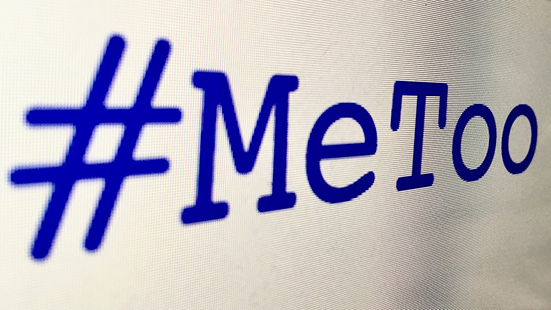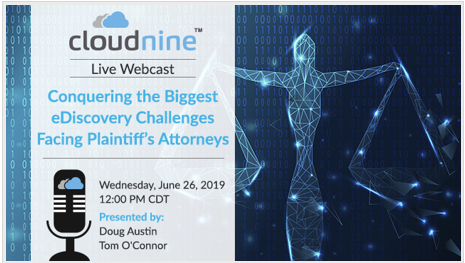Court Rejects Plaintiff’s Timeliness and Form Served Arguments; Grants Defendant’s Motion to Compel: eDiscovery Case Law
In Frey v. Minter, No. 4:18-CV-191 (CDL) (M.D. Ga. June 12, 2019), Georgia Chief U.S. District Court Judge Clay D. Land rejected the plaintiff’s arguments that the defendant’s discovery requests were untimely and were not properly served and granted the defendant’s motion to compel against the plaintiff. With regard to the defendant’s motion to compel against a non-party law firm, Judge Clay ordered that firm to provide the defendant with an estimated cost for responding to the requests, and upon payment of those costs, to produce the documents within twenty-one days.
Case Background
In this defamation case filed by one attorney against another attorney and his client regarding their claims of alleged fraudulent and unethical conduct by the plaintiff as a creditor against a former client, the parties filed a joint case management report, proposing a discovery deadline of January 26, 2019 and agreeing that “all discovery must be commenced in time to be completed before this date.” The parties also agreed that each party would “timely serve discovery requests so that the rules allow for a response prior to the discovery deadline.” After the plaintiff appealed several of the Court’s rulings in January 2019 and the appeal was dismissed for lack of jurisdiction, the Court found good cause for an amended scheduling order and instructed the parties to submit a joint proposed scheduling order that included an updated discovery deadline.
The parties agreed to a deadline for motions to compel previously issued discovery requests and the Court initially entered an amended scheduling order that provided for no motions to compel, noting that any discovery motions should have been filed during discovery. However, the defendant sought reconsideration, asserting that the parties had agreed that “no new discovery requests would be issued, but that they could seek Court action on requests that had already been issued.” The plaintiff opposed the motion for reconsideration, anticipating that the defendant might seek to compel responses to discovery requests that were made on the eve of the discovery deadline.
The Court granted the motion for reconsideration and adopted the deadlines that the parties originally proposed, knowing that any motion to compel would likely relate to discovery requests that were served during discovery, even those that were technically untimely under the Case Management and Scheduling Order.
Judge’s Ruling
Judge Clay stated: “Given that the Court had found good cause for an amendment of the scheduling order and had invited the parties to extend all of the deadlines, including the discovery deadline, the Court’s ruling that permitted post-discovery motions to compel likewise included the right to compel responses to any discovery that had been propounded prior to the expiration of the discovery deadline, even if responses to that discovery could not have been made prior to the previous discovery deadline. To hold otherwise would make the Court’s order extending the motion to compel deadline meaningless because there would be no discovery requests that could be compelled. Accordingly, the Court finds that Minter’s motion to compel shall not be denied based upon his failure to serve his discovery requests within the deadline established by the earlier case management order.”
Judge Clay also rejected the plaintiff’s other objection to the motion – that he was not properly served with the requests because he did not consent in writing to service of discovery requests via email. Noting that the plaintiff had responded to the defendant’s former attorney’s question regarding whether email service to his email address is sufficient for the federal court filings by stating “Yes, this email is good”, Judge Clay stated: “Minter was justified in believing that Frey had consented to service of discovery requests by email. Even if Frey had not so consented, any deficiency in Minter’s service was harmless because it is clear that Frey received the document requests. The Court declines to deny the motion to compel on this ground.” As a result, the defendant’s motion to compel was granted and the plaintiff was ordered to respond within twenty-one days.
Judge Clay also observed that “Minter also filed a motion to compel against non-party law firm Hunton, contending that the firm failed to respond adequately to his subpoena.” Noting that “[t]he Court is sensitive about imposing unnecessary costs upon a non-party”, Judge Clay stated that “[t]hat concern can be addressed, however, by requiring Minter to pay for Hunton’s expenses associated with responding to the request.” As a result, Judge Clay ordered that firm to provide the defendant with an estimated cost for responding to the requests, and upon payment of those costs, to produce the documents within twenty-one days.
So, what do you think? Should the motion have been denied if they were untimely in the Case Management and Scheduling Order? Please let us know if any comments you might have or if you’d like to know more about a particular topic.

Case opinion link courtesy of eDiscovery Assistant.
Sponsor: This blog is sponsored by CloudNine, which is a data and legal discovery technology company with proven expertise in simplifying and automating the discovery of data for audits, investigations, and litigation. Used by legal and business customers worldwide including more than 50 of the top 250 Am Law firms and many of the world’s leading corporations, CloudNine’s eDiscovery automation software and services help customers gain insight and intelligence on electronic data.
Disclaimer: The views represented herein are exclusively the views of the author, and do not necessarily represent the views held by CloudNine. eDiscovery Daily is made available by CloudNine solely for educational purposes to provide general information about general eDiscovery principles and not to provide specific legal advice applicable to any particular circumstance. eDiscovery Daily should not be used as a substitute for competent legal advice from a lawyer you have retained and who has agreed to represent you.










